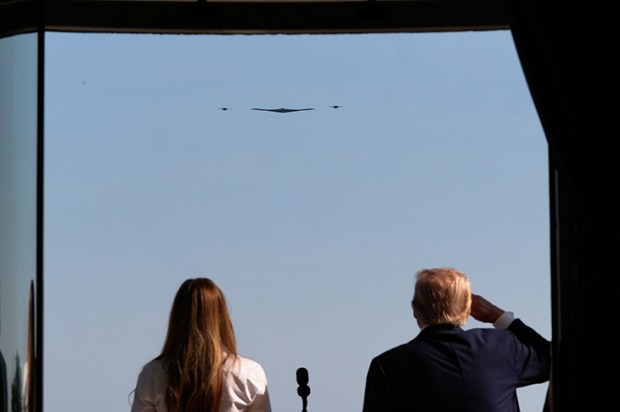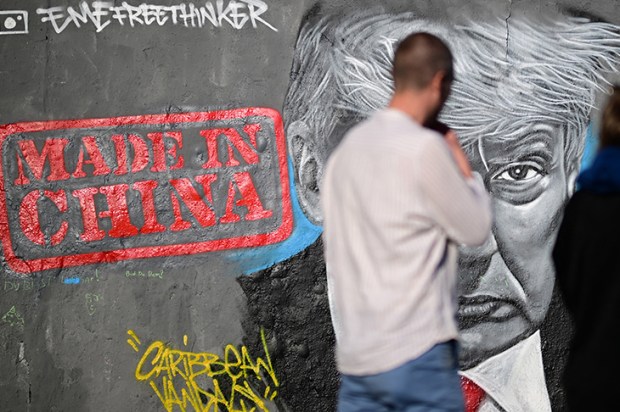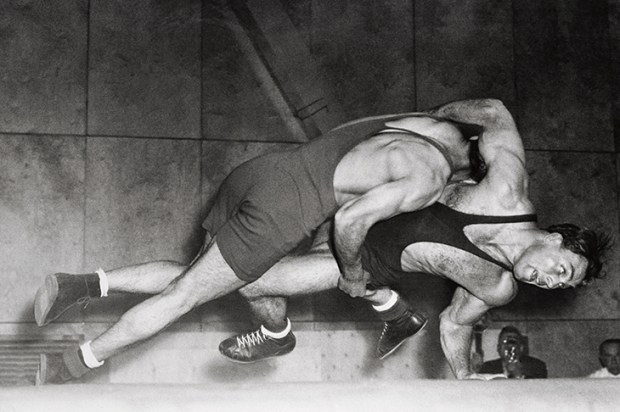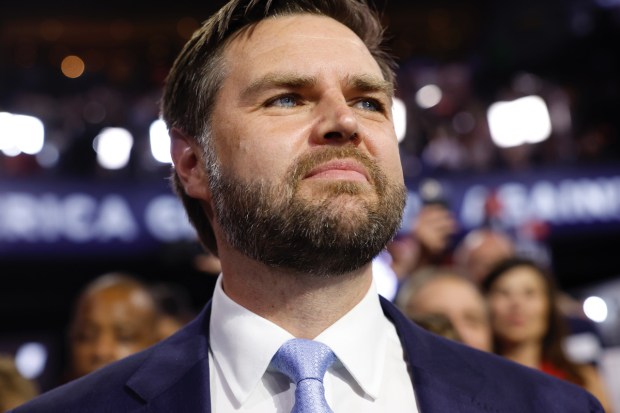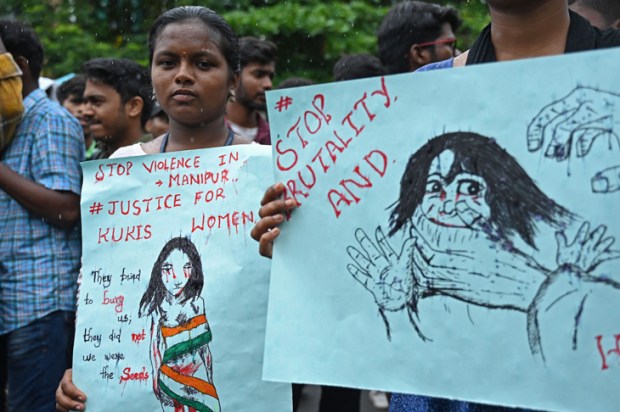For the purposes of containing China’s influence across the Indo-Pacific, there is no more important partner for the US than India, and vice versa. The strategic partnership is under threat from an explosive combination of American arrogance and Indian hubris. Matters have not been helped by the matching character traits of the two leaders: braggadocio, fondness for sycophantic courtiers, hostility to criticism, narcissism. Trump might be the better known for the last, but Modi outmatched him when he hosted President Obama in May 2015 in a suit with his name stitched into the fabric to form the pinstripes. Modi has embraced Trump as a ‘true’, ‘dear’ and ‘great friend of mine’. But tariff king Trump has no permanent personal attachments, only shifting transactional interactions that compartmentalise trade and strategic objectives.
On 30 July, despite many signals from both sides that a deal was close, Trump imposed 25-per-cent tariffs on India. The next day, he posted indifference if India and Russia ‘take their dead economies down together’. On 6 August, he announced an additional 25-per-cent tariff as penalty for India’s purchase of Russian oil. India exports around 20 per cent of its goods to the US. The tariffs will hit exports worth around two per cent of India’s GDP. The threat of an additional ten per cent against members of the non-Western Brics grouping, of which India is a founding member, remains. The sudden chill in a bilateral relationship, that had promised so much at the start of the year, reflects missteps and missed signals on both sides that could damage India’s economic and US strategic ambitions. Modi came to believe his own hype of India as the fastest-growing major economy that fed India’s great power delusions. Yet, India did not make it into Forbes’ list of the ten most powerful countries in 2025, behind the likes of Germany, South Korea, Japan, Saudi Arabia, Israel and the UAE. The hype will turn into reality if and when more Indians start returning than leaving. Meanwhile the call centres and spam artists have caused immense reputational damage.
India has an unmatched capacity to look an opportunity firmly in the eye, turn around, and walk off resolutely in the opposite direction. Modi has a record of over-promising and under-delivering. In eleven years of his rule, India shot itself in the economic foot by neglecting structural reforms. Had he tackled these with urgency on becoming PM in 2014, by now India would have been well positioned to hurt anyone inflicting economic pain on it. Instead, Modi frittered away the political capital of two powerful electoral mandates on pet projects of cultural-religious nationalism, that has rent asunder social cohesion, instead of adjusting policy settings and undertaking governance reforms. India continues to drift rudderless on the tide of history instead of bending its arc to the destination of choice. With a failure to act decisively to end tax terrorism, ease labour market and land acquisition rigidity, and agree to arbitration by international tribunals that offer international investors more of a level playing field than national structures subject to government capture, foreign investors refused to flock to India.
The US has shot itself in its strategic foot with the steep tariffs on India. India offered many concessions to the US such as no tariffs on industrial goods and phased drawdown of tariffs on cars and alcohol. However, given economic realities and political sensitivity in relation to rural livelihoods and food security, agriculture and dairy sectors are red lines for any Indian government. Tariffs on India as punishment for bankrolling Russia’s war on Ukraine are ‘unfair, unjustified and unreasonable’, India’s official spokesman said. According to the Centre for Research on Energy and Clean Air, in July Russia’s most lucrative export markets for fossil fuels were China (€6.2 billion), India (€3.5bn), Nato member Turkey (€3.1bn), and the EU (€1.3bn). Yet, unlike India, China has escaped secondary sanctions. The US itself has been buying Russian uranium hexafluoride, palladium, fertilisers and chemicals. When asked about US imports from Russia, Trump said, ‘I don’t know anything about it. We will have to check.’
Trump risks setting back 25 years of bipartisan efforts on both sides to build a strategic partnership that can act as an Indo-Pacific counterweight to China. India has been shifting arms purchases towards Western suppliers, notably France, Israel and the US. Russia’s share of India’s arms imports halved to 36 per cent in the last five years, compared to a decade ago. Trump’s actions have reawakened fears of US untrustworthiness and fuelled anger at the US. He is seen less as a deal-maker and more a mob boss with the classic shakedown threat of sign here, or else. The simultaneous confrontation with China, India and Russia risks driving them closer together into a new strategic troika. Tariffs will damage India’s contributions to the Quad grouping, harming the strategic interests of Australia and Japan as well.
India’s quest for affordable and stable fuel is non-negotiable. To abandon the supply of Russian oil under pressure from Washington would be a betrayal of core domestic interests, morally indefensible and politically suicidal. What might be a negotiating tactic for Trump is widely seen in India, by governing and opposition parties, by officials, commentators and the people, as threats from a bully. On 8 August, Modi had ‘a good and detailed [phone] conversation’ with Putin. They recommitted to deepen the special and privileged India-Russia strategic partnership. Modi’s attendance at the forthcoming Shanghai Cooperation Organisation summit in Tianjin, including discussions with President Xi Jinping on the sidelines, was confirmed on the same day. Modi’s last visit to China was in June 2018. An editorial in the Global Times, a CCP mouthpiece, referenced US tariffs to comment that India can be an American friend ‘but only on the condition that it stays obedient’.
India has a longer list of legacy complaints against America than the other way round. American-made and -supplied arms have been used in war against India and killed Indian soldiers. The reverse has never happened. On 22 April, terrorists with Pakistan links killed 26 domestic tourists in Pahalgam, Kashmir, singling out Hindu males. Trump repeatedly claimed he’d brokered an India-Pakistan ceasefire after their four-day skirmishes in May. Pakistan stoked Trump’s ego in thanking him and nominating him for the Nobel Peace Prize for averting a nuclear war. India’s denials of Trump’s role in the ceasefire were not just a challenge to one single boast but an affront to Trump’s narrative of being the world’s peacemaker-in-chief. Less than two months after Pahalgam, on 18 June Pakistan’s army chief Asim Munir had lunch with Trump. Former Pakistan ambassador to the US Husain Haqqani downplayed the meeting as a tactical move by Trump to annoy India into improving its offer in the tough tariff talks then underway. He succeeded in irritating not just the Indian government but also most opposition parties, the public and the media. How would the Americans have reacted if India’s Prime Minister had hosted Osama bin Laden for lunch in November 2001?
Got something to add? Join the discussion and comment below.
You might disagree with half of it, but you’ll enjoy reading all of it. Try your first month for free, then just $2 a week for the remainder of your first year.


